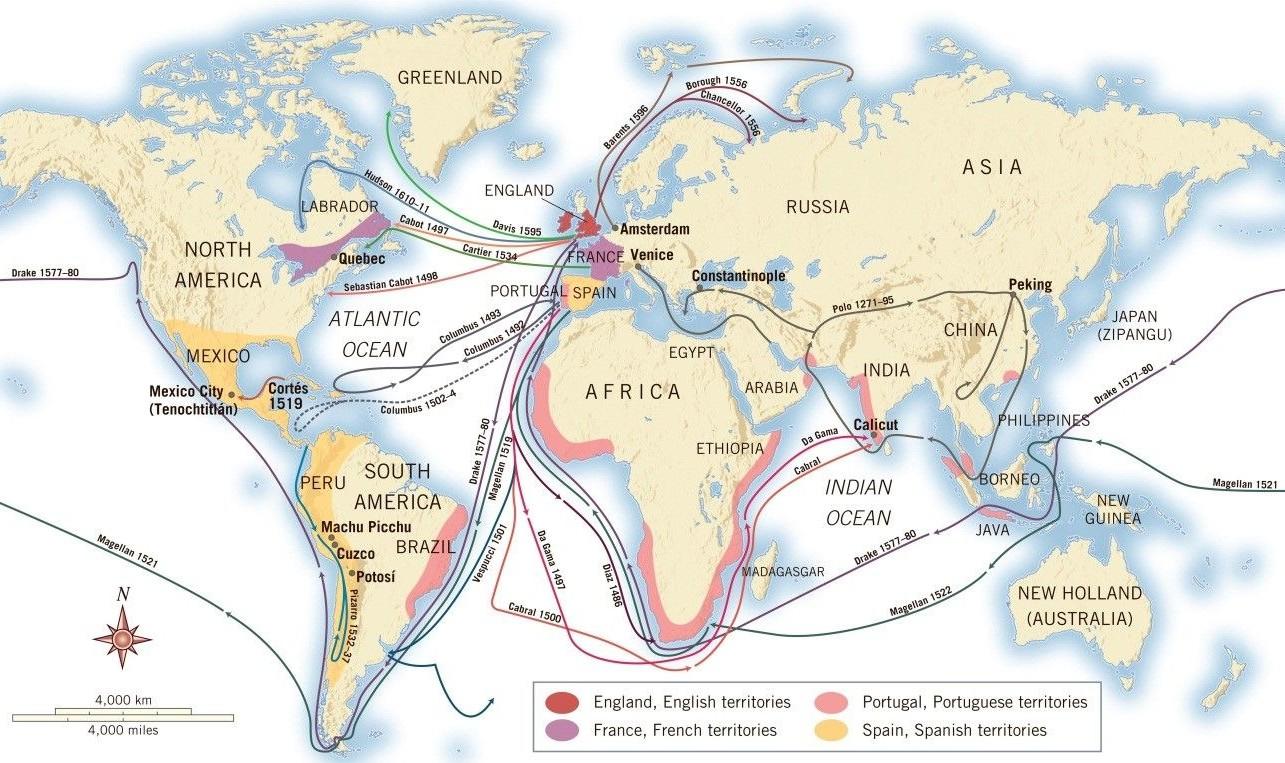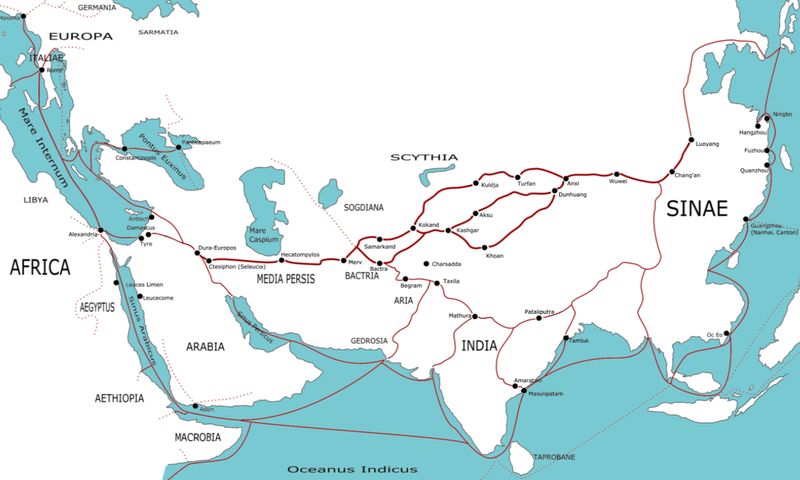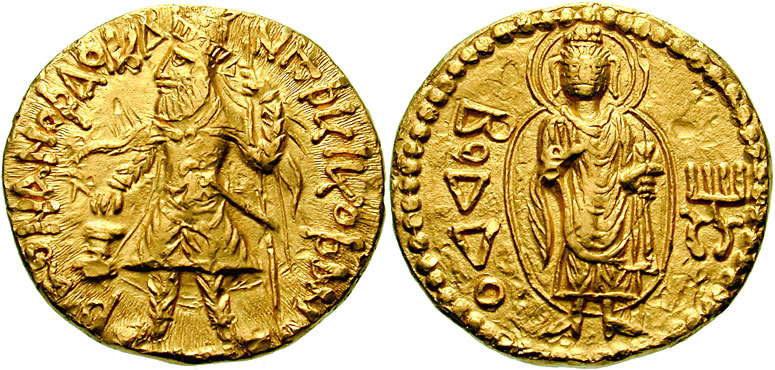Tags
Author: Journey Martin, senior in the History major
Editor: Brittany Von Kamp, second year student in the M.A. in History
This is a public presentation written as part of HIST4001, Professional Practices in History and HIST4805, Seminar in Political and Economic History.

“Globalization” is a popular topic in political discussions today. Countries today face the growing pains of an increasingly interconnected world. More than ever politicians and theorists debate what a globalized world and global economy should look like in the 21st century. When facing the challenges and crises of increasing globalization, it may be beneficial to observe the history of organized and long-distance trade. The Silk Road (and its maritime partner) is well known to those who have studied world history, as is the European expansion and colonization of the 17th and 18th centuries. Were these prior examples of “world-economies?” Has globalization taken place prior to these centuries? Historians have competing theories on how the modern world-economic system was developed.
Traditionally globalization, or the formation of a world-economy is thought to be a product of European capitalism and colonization. As Europe quickly developed its industries and capitalist competition, nations would expand their influence across the globe seeking economic opportunities and access to new goods. It is a well-known story in the Western world how, with its advanced technology and innovative techniques, Europe would come to dominate the wider world through colonization and subjugation. European nations would conquer and claim land in the Americas, Asia, and Africa. Through these conquests, these territories were brought into the European economic sphere, and European nations benefited greatly from hegemonic control of trade and access to expanded and often brutalized workforces. By bringing these subjugated nations into the European economic sphere, the “world-economy” changed from a collection of regional exchanges to a system where countries all over the world contributed to the same system. Rather than this loose system of regional trade, colonization had created one system of economic exchange, one in which Europe stood on top. Until the mid-20th century this narrative prevailed in historical discourse and discussions on the origin of a world-economy.

All historians do not agree that globalization and an economic world-system originated with European colonization and imperial endeavors, however. Many argue that there are several examples of “mini-globalizations” in Premodern history. These mini-globalizations describe periods of long-distance economic and cultural exchanges between regions. Christianity, Islam, and Buddhism spread during Antiquity and the Medieval era as missionaries made their way along developed trade routes. Goods from China travelled by ship through Indonesia and Malaysia to India or across land routes through central Asia to the Arabic Peninsula and as far as Europe. Throughout history regions would develop strong trade relations and exchange cultural practices with faraway neighbors. Most of these relationships were short-lived as kingdoms would fall to instability, overextend their influence, suffer from plague, or even simply close themselves off from long-distance trade.
Despite interruptions in long-distance trade throughout history, the exchanges between cultures can still be seen in the material record. Coins from Europe found themselves as far as China, and Chinese silk was a highly-prized and rare luxury in Europe and the Islamic world. The decline of Hellenic empires in the Mediterranean or the Han Dynasty in China temporarily disrupted long-distance trade networks, but history demonstrates that they would be reopened by their successors. The Silk Road through Central Asia flourished under Mongol administration, and the Ottoman Empire was able to monopolize trade between Europe and the Mediterranean to India and East Asia. By the 13th and 14th centuries a network of trade systems flourished across the Eurasian continent, one in which a reinvigorated Italy rejoined the long-distance network, and Northern Europe occupied a peripheral position.

A coin from the Kushan Empire in Northwest India circa 2n Century CE. Written on the coin is “Buddha” in the Greek alphabet. Source: Wikimedia Commons
Many historians argue that the modern world-system has its roots in these earlier economic networks. These historians claim that the modern capitalist world-economy was born when Europe gained the ability to control long-standing trade networks, not when it had created them. Had these networks and trading practices not been in place prior to European exploration, those traders would have had little to build their economic empires on. At the time of European exploration, China had isolated itself from the world-economy, and the Ottoman Empire controlled the most productive routes through Asia. European empires had risen from the “Dark Ages” following the collapse of the Roman Empire, and the divided feudal states had coalesced into more powerful mercantile states seeking a greater share of global trade. European explorers sought, among other things, to access the Chinese market and obtain Asian goods without interference of an Ottoman Empire they were periodically hostile with. These actions demonstrate not that Europe was beginning the creation of a world-economy, but the reorientation of networks that had already existed. Europe’s role in the development of a world-economy was not its creation, but to position itself as the hegemon over international commerce.

An analysis of history demonstrates that long-distance trade has existed long before European hegemony, and that the Western world has not always been the chief beneficiary of global commerce. On the contrary; China, the Arabian Peninsula and Turkey, as well as India have previously taken advantage of trade networks long before contemporary transportation and economic systems. If we are to fully understand the implications of a globalized world, an understanding of world history and the history of international commerce is essential. History demonstrates that shifts can occur in the distribution of wealth, and that no one region has maintained uninterrupted hegemony over trade. Tomorrow’s centers of global commerce may yet shift as they have before.
To Learn More:
Abu-Lughod, Janet L. Before European Hegemony: The World System A.D. 1250-1350. NY: Oxford University Press, 1989.
Hodgson, Marshall G.S. Rethinking World History: Essays on Europe, Islam, and World History. Edited by Edmund Burke III. NY: Cambridge University Press, 1993.
McNeill, William H. The Rise of the West: A History of the Human Community with Retrospective Essay. Chicago: University of Chicago Press, 1991 (originally published 1963)
Wallerstein, Immanuel. The Modern World-System Vol. I: Capitalist Agriculture and the Origins of the European World-Economy in the Sixteenth Century. Berkeley: University of California Press, 2011 (originally published 1974).
